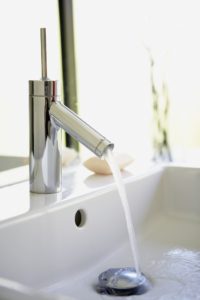
We’ve heard a lot about the safety of drinking water in the national media lately. Make sure you’re taking the steps to have healthy, enjoyable water in your home.
The safety of drinking water has been the source of a lot of confusion as well as making its way into the national spotlight; from Flint, Michigan, and much closer to home in Baltimore, Maryland, we’ve heard a lot about safe drinking water lately. While not every case of drinking water safety is as serious as some special circumstances, it’s still the case that most consumers don’t know what’s actually in their water—and when something like lead seeping into water can have such drastic effects, it’s critical that we learn more about what we’re drinking. Here are a few of the most important considerations to keep in mind when thinking about the safety of your drinking water.
Am I at Risk for Lead Contamination?
The truth is, whether your water comes from a well on your property or you rely on local public utilities, there’s a chance that you could be at risk for lead contamination. This is because, even if water systems do their own testing and treatment of water, the actual pipes in homes vary quite a bit. If your home has lead pipes or your plumbing was installed before 1986, there’s no harm in checking. You can ask your local water supplied to do testing for you and, if the levels of lead in the water are 15 parts per billion, you should be safe. Again, though, this doesn’t indicate whether the water actually coming out of your tap is safe to drink, so it’s a good idea to conduct your own home test.
Purchase a lead testing kit from a local home improvement shop and you can do this on your own fairly easily. Just be sure to follow the instructions on the package. For best results, wait until the morning and test the first bit of water that comes out of the tap that day. You will then send the water to a state-certified lab where you can find out whether or not your water has lead in it.
How to Reduce Risk of Exposure
If you’ve ever seen those faucet or pitcher filters out there, you know they can vary wildly in quality—but some of them are perfectly capable of removing lead from drinking water. You also want to clean your faucet’s screen regularly. If you’re really concerned, leave the tap running for 20 seconds before filling up your glass. The chance of lead increases in hot water so it’s a good idea to use cold water wherever applicable. Finally, if the problem is persistent, you may need to replace the pipes in your home if they are the culprit.
Call Mahon Plumbing Today
If you still have more questions regarding your plumbing, we here at Mahon Plumbing are here to help. We have been serving the wider Baltimore area since 1994, so we have the experience to back up our fantastic service! Call us at our Baltimore location at 410-766-8566 or our Pasadena location at 410-636-7944. Be sure to keep up with us on social media by following us on Facebook or Twitter.
